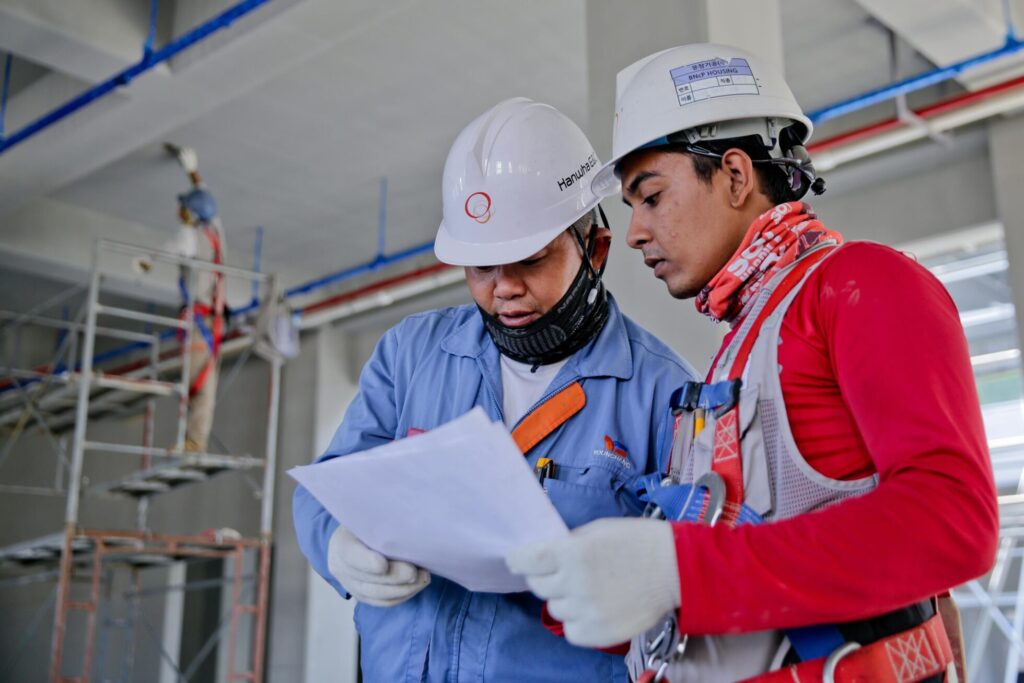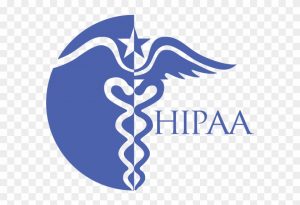Role of Communication in Safeguarding Immigrant Workers
Introduction
In the wake of Baltimore’s catastrophic bridge collapse, as reported by leading news outlets like the BBC, The Washington Post and The New York Times, a pressing issue has been thrust into light: the safety of Latino immigrants laboring in hazardous conditions.
This incident not only highlights the loss of life but also serves as a reminder of the culturally sensitive communication barriers endangering lives in our workplaces.
For immigrant workers in high-risk sectors, daily challenges are intensified by language barriers. In 2020, making up 30% of the construction industry’s workforce, their pivotal role underscores the critical need for comprehensive safety measures that address linguistic hurdles, ensuring every worker is equipped to navigate their job environment safely.
In Dialog One, we are committed to ensuring that every human being gets heard, so we question How can we bridge the communication gap to protect these essential members of our workforce?
This article explores the transformative power of effective, culturally sensitive communication strategies in preventing workplace tragedies.
The Baltimore Incident: A Call to Awareness
The recent bridge collapse in Baltimore, which led to the unfortunate loss of six Latino immigrant lives, has brought to light the risks these workers face daily.
Research conducted in the construction industry, published in the journal Sustainability, highlights that migrant workers are more vulnerable to safety accidents.
The study underscores the challenges posed by cultural and language barriers, lack of safety education, and inadequate safety training, with migrant workers experiencing a 2.2% higher rate of safety accident severity compared to non-migrant workers.
Understanding the Communication Barrier
Many workplace mishaps result due to a lack of communication. Although overall workplace fatalities have declined, according to research by Water Well Journal, fatalities among Hispanic construction workers have increased dramatically.
The lack of proper safety training for employees who do not understand English can lead to an increase in the number of accidents, errors, and a drop in productivity. Over 1,000 Hispanic or Latino workers suffered fatal work-related injuries in 2020, reflecting 22.5% of all such fatalities despite Latinos making up 18% of the labor force.
In the construction industry, poor safety communication is a widespread issue, impacting worker safety. Studies have shown a negative relationship between effective safety communication and workplace injury rates, emphasizing the importance of clear communication in preventing accidents.
For immigrant feedyard workers, language barriers coupled with cultural differences can hinder the effective exchange of safety information, potentially leading to safety incidents and injuries.
The Immigrant Perspective
For many immigrant workers, English is not the first language. This language barrier is not just about the inability to converse fluently; it’s about understanding and being understood, particularly regarding safety protocols. Miscommunication or the lack of understanding can have severe consequences, including accidents and fatalities.
Moreover, cultural differences extend beyond language. These differences can influence how safety norms are perceived and followed. In many cases, there is a gap between what is communicated and what is understood, driven by differences in cultural contexts.
Immigrant workers often face economic pressures that compel them to work in high-risk industries. With a significant proportion of Latino communities living in poverty, these jobs are not just sources of income but lifelines for their families.
This necessity can lead to accepting hazardous work conditions, often without proper safety measures, as the fear of job loss looms large.
Employers’ Crucial Role in Safety Communication
Employers should be held responsible for the safety of their employees; this means that employers must make sure that all employees understand all safety instructions.
According to OSHA recommendations, it is a legal obligation for businesses to provide understandable safety training to every employee regardless of his native language.
Non-compliance with these standards can have severe consequences as we can see in the increased risks faced by non-English speakers in industries such as high-risk manufacturing and construction.
Employers must recognize that safety training is not a one-size-fits-all approach. The diversity of the workforce requires tailored training programs that address various language and cultural backgrounds. This tailored approach ensures that all workers, irrespective of their native language or educational level, receive and comprehend vital safety information.
Effective safety communication goes beyond verbal instructions. Employers should employ diverse methods like visual aids, practical demonstrations, and interactive sessions, which are universally understood regardless of language barriers. These methods help reinforce understanding and provide clear guidance on safety practices.
Additionally, employers should regularly update their training programs to align with the changing demographics of their workforce and the latest safety standards in their industry. This ongoing commitment to safety education is essential in adapting to the evolving needs of a diverse workforce.
Intercultural Communication For Prevention of Workplace Accidents
The linguistic and cultural barriers can lead to misunderstanding of safety instructions, which in turn, causes accidents at the workplace. Therefore, this issue is solved through the elimination of cultural and language barriers.
Communication that has a good impact on the workforce is where employees understand and follow the safety policies and procedures. It also minimizes errors or shortcuts that might result in any accident occurring.
Employers can overcome communication hurdles and build safer workplaces by encouraging employees to engage in active listening, providing instructions that are easy to understand, providing language and culture training, as well as cultivating a happy work atmosphere.
In addition,intercultural communication also helps to identify possible hazards; it proactively deals with safety issues and makes sure everyone understands what needs to be done about safety. Apart from that, it builds trust among colleagues thus increasing safe behaviors while reducing the possibility of workplace accidents.
Effective Strategies for Workplace Safety
Multilingual Safety Training: It is possible to greatly lessen the dangers that workers face by implementing safety training programs that are available in several languages.
Cultural Sensitivity in Communication: To guarantee that safety messages are effectively comprehended, it is essential to have a thorough understanding of cultural variations and to incorporate communication tactics accordingly.
Regular Assessments and Feedback: Continuous evaluation of the efficacy of communication tactics and the collection of feedback from employees are two methods that can be utilized to bring about improvements in these processes.
Best Practices For Intercultural Communication
In the workplace, effective intercultural communication must be fostered more than ever. Creating a collaborative and inclusive environment that values diversity is the main objective of intercultural communication. This can begin with regular training sessions for employees to enlighten them about diverse backgrounds, and promote respect and understanding.
It is critical to note carefully that culture consists of a wide range of values, ideas, behaviors, and attitudes. These cultural elements influence how individuals perceive information, make decisions, and resolve conflicts among themselves.
Organizations should provide their workers with the means and opportunities to learn about different cultural backgrounds as an obligatory act. An atmosphere of mutual acceptance and understanding for these distinctions will be fostered as a result of this circumstance.
When it comes to cross-cultural encounters, it is equally crucial to encourage employees to conduct research and get themselves ready. Providing staff with access to materials such as culture guides or online databases, as well as encouraging them to approach these contacts with an open mind and a willingness to learn, is an important part of this process.
Employees should be encouraged to familiarize themselves with the cultural norms, practices, and communication styles of their contemporaries or customers who come from a variety of backgrounds. It is also possible to facilitate smooth communication by investing in language instruction, which is especially beneficial in varied work contexts.
Dialog One: A Partner in Safety and Communication
Dialog One works closely with organizations to develop and implement effective communication strategies tailored to the unique needs of their workforce, particularly focusing on immigrant workers. Our services extend beyond translation to encompass cultural nuances, making safety protocols accessible and understandable to all workers.
For those in positions of leadership, the message is clear! It’s time that we integrate effective communication strategies into safety training. It is not just best practice but a necessity!
You can ensure that your workplace is safer, more inclusive, and respectful of the diverse needs of your employees by partnering with organizations like Dialog One. It’s imperative to acknowledge that the commitment to diversity and inclusion should permeate every facet of an organization’s culture.
This commitment must extend beyond safety training to influence all aspects of organizational life, including hiring practices, career development, and day-to-day interactions. A holistic approach to organizational culture fosters an environment where every employee, regardless of their background, feels valued, respected, and heard. This environment not only ensures the physical safety of the workforce but also nurtures their overall well-being.
By integrating these principles into the core of the organizational ethos, leaders can create a workplace where the safety and well-being of every worker are not just prioritized but are seen as integral to the success and identity of the company. Such a comprehensive approach underscores the organization’s dedication to creating a respectful, inclusive, and safe working environment, solidifying its position as a leader in cultivating a truly inclusive workplace.”
Case Studies: Pioneering Solutions Through Partnership
By collaborating with many of our large and small businesses clients, Dialog One highlights the transformative power of language services, demonstrating a commitment to inclusivity and operational excellence. This case study illuminates the critical importance of addressing linguistic diversity to enhance business services delivery and client satisfaction.
- Partnership Highlights: A strategic alliance that prioritized multilingual communication, breaking down barriers for non-English speakers in the legal, medical, and general business contexts.
- Operational Efficiency: Integration of translation services led to a 30% increase in case handling efficiency, showcasing the link between effective communication and productivity.
- Impactful Outcomes for Individuals: The case of Juan M. highlights how tailored language solutions can navigate complex legal and immigration issues, ensuring justice and positive resolutions.
This partnership exemplifies the synergy between legal expertise and linguistic acumen, setting a benchmark for future endeavors in legal aid and beyond.
Conclusion
The tragic event in Baltimore serves as a stark reminder of the critical need for clear, culturally sensitive communication, especially in high-risk environments. It emphasizes the urgency of fostering an inclusive atmosphere among coworkers, where every worker, regardless of their linguistic or cultural background, feels heard and safe.
For leaders, in every industry, embracing the role of guardians for their teams’ safety and well-being is not just a responsibility—it’s a profound opportunity to define the legacy they leave behind. By wholeheartedly committing to a culture that prioritizes safety and inclusivity, leaders can create a lasting impact that goes beyond financial success. It’s about building a legacy that champions the dignity, safety, and respect of every worker. Such a commitment sends a powerful message that the true measure of success is the value we place on human life and well-being. This isn’t merely a duty; it’s the essence of leadership.
Dialog One is committed to ensuring workplace safety and inclusivity through comprehensive communication services. Our mission is to support leaders in creating environments where every employee’s safety and well-being are foundational to company success. Visit our website or contact us to learn how we can help build a safer, inclusive workplace together.
Join us to create a world where everyone is heard.


